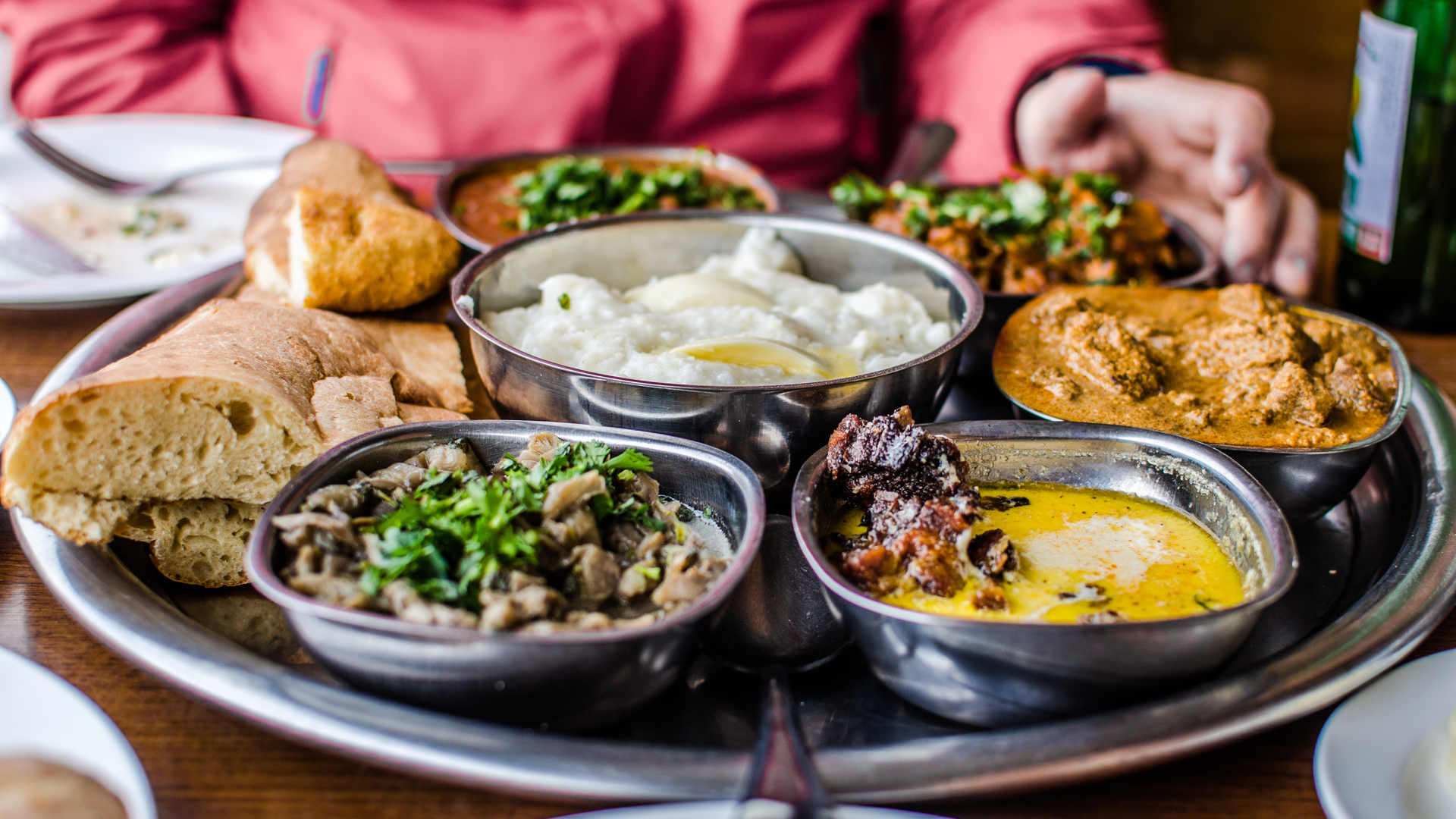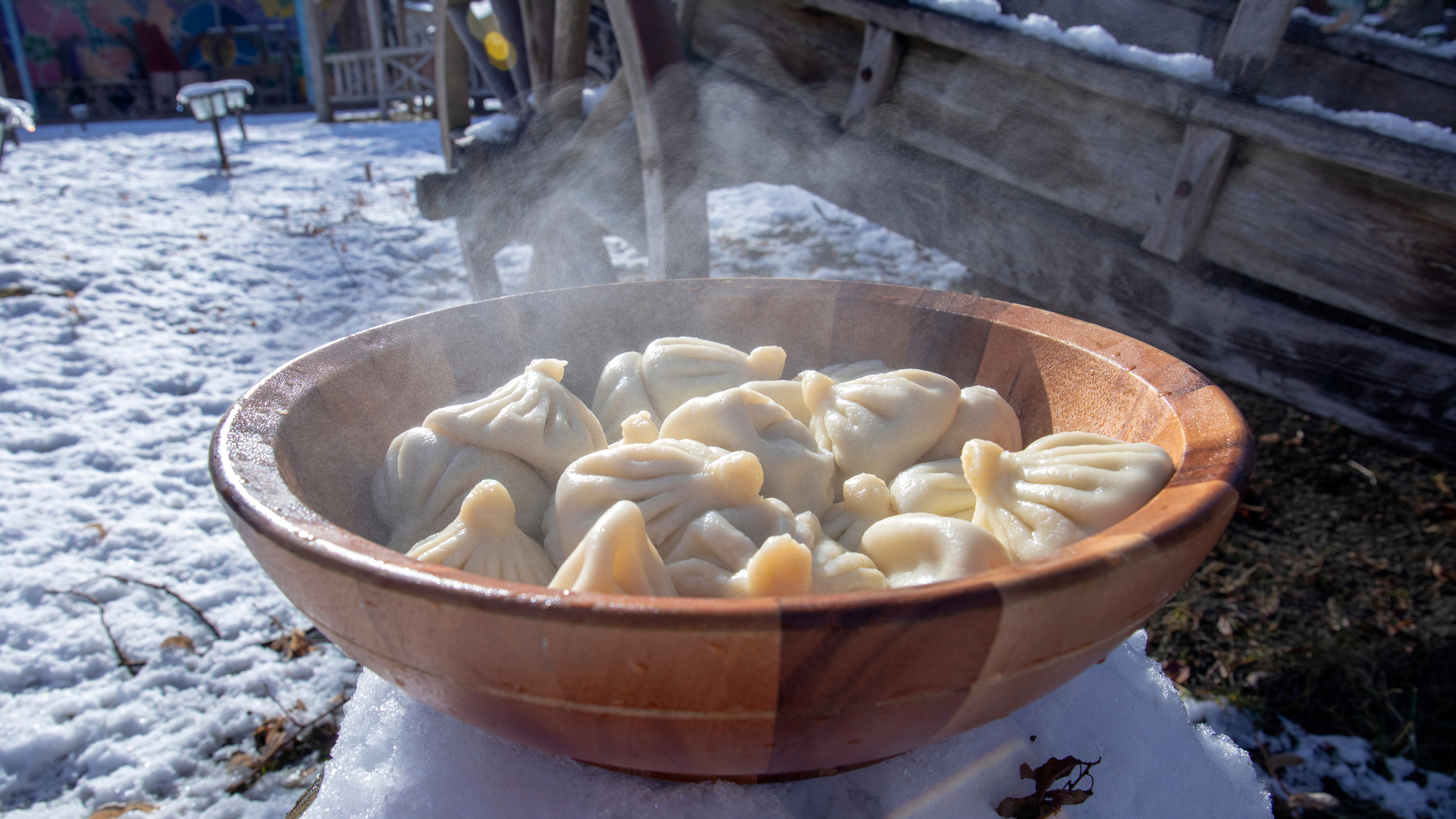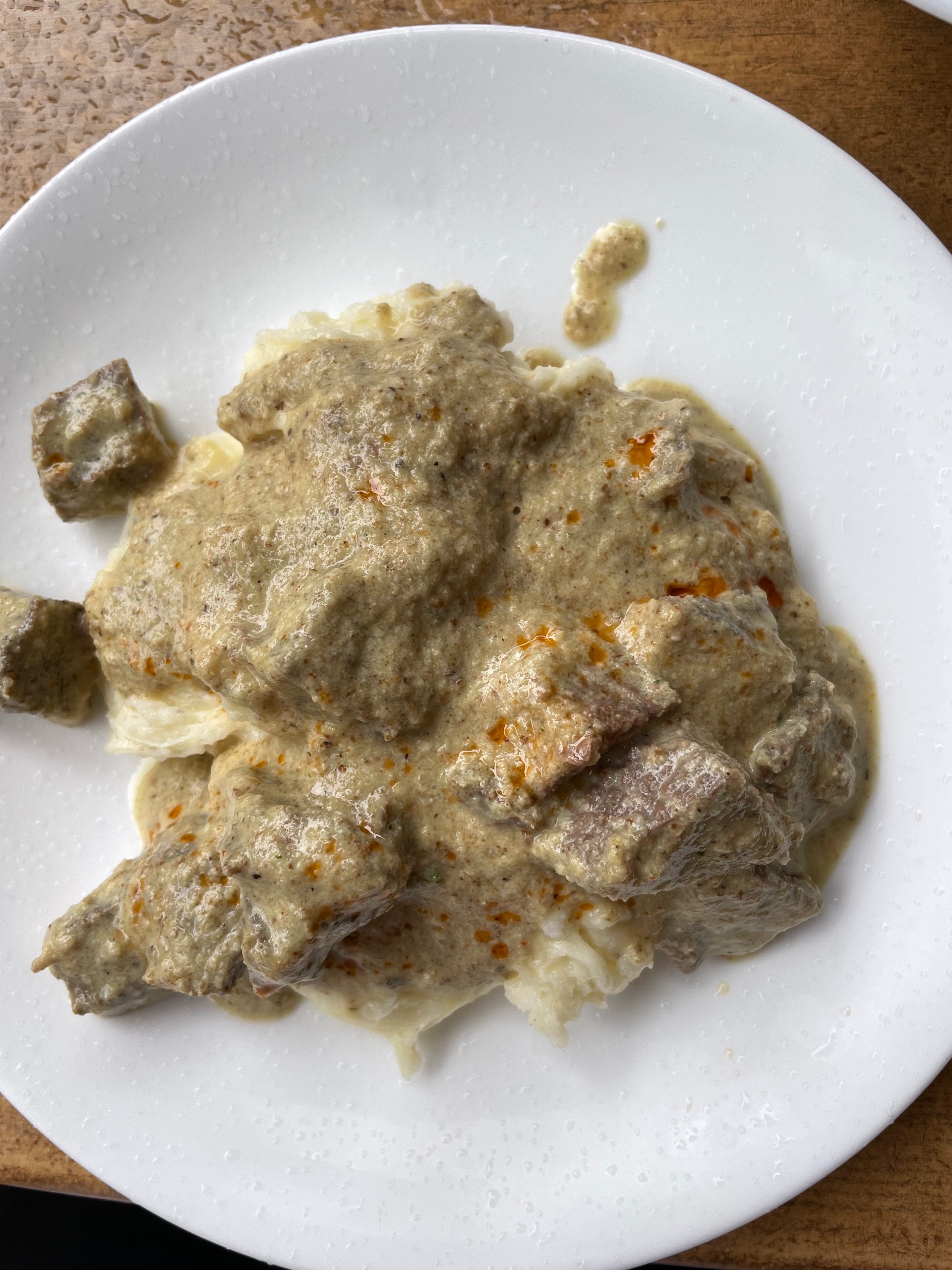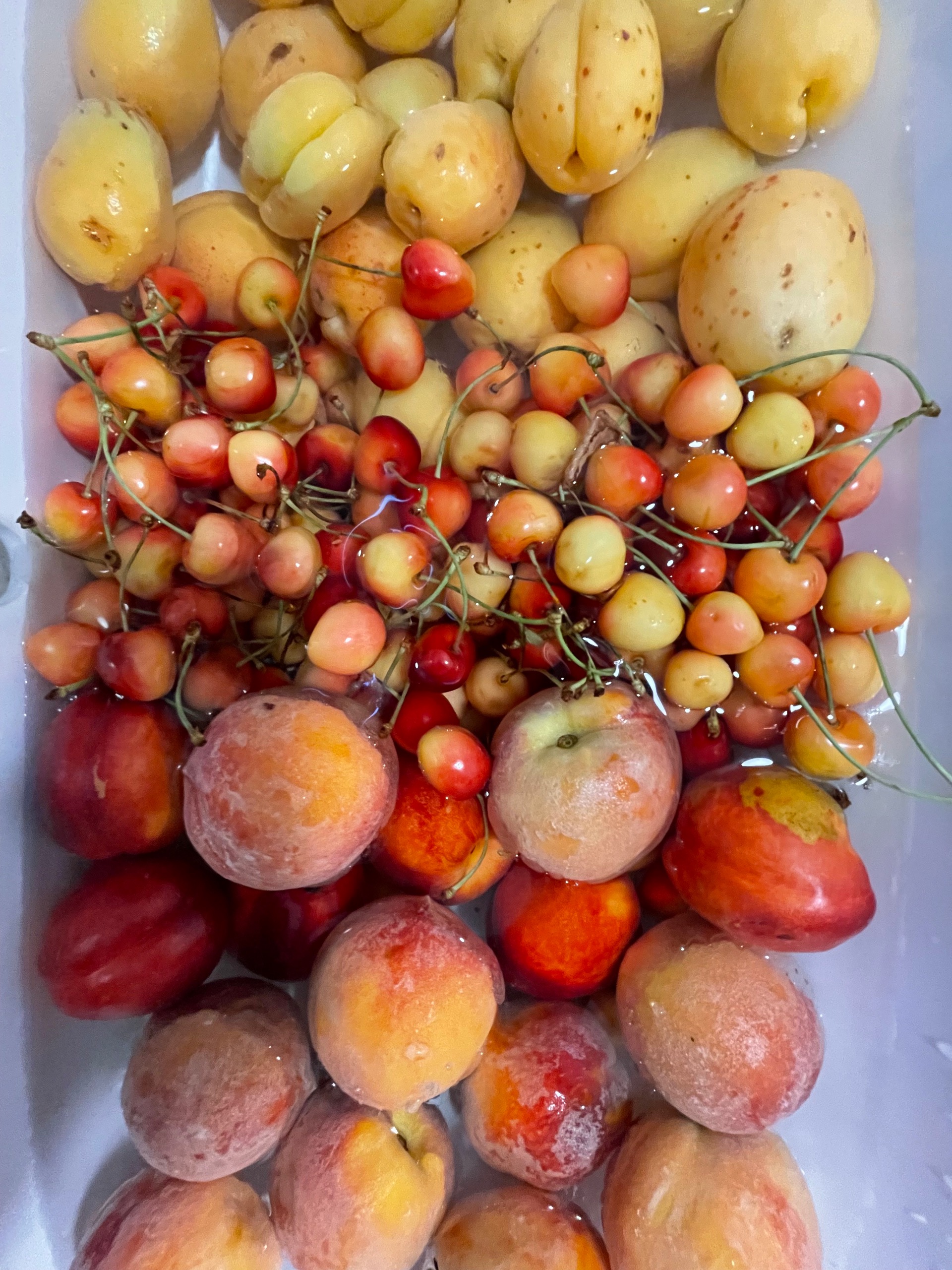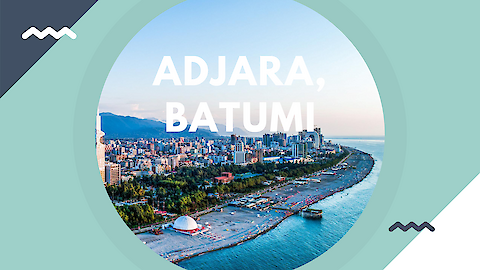- Travel Blog
- The Big Guide to GEORGIAN Cuisine
The Big Guide to GEORGIAN Cuisine
It should be noted that the list includes not only the classic dishes, but also those that are very common, for example, in modern Georgia. For example kebab: not at all a Georgian dish, but very popular among the local population throughout the country. And it is served in a completely different way than in neighboring Turkey or Arabian countries: in Georgia kebab is two long cutlets, wrapped in pita bread, plus it is usually served with satsebeli (hot tomato sauce) or tkemali (wild plum sauce) and onions.
If you're planning your exciting trip to Georgia, it will definitely be helpful to know what's waiting for you on the table. Let's try to understand all these khachapuri, their names and nuances. And do not forget to take Mesim, because you will not often find such an abundance of delicious food in European countries.
Abkhazuri - sausages made of minced meat "wrapped" in fatty guts.
Ajapsandali - stewed vegetables, always including potatoes and eggplants
Achma - Georgian "cheese lasagna".
Kebab - a dish of minced pork or lamb, salt and spices. This dish, although not Georgian, is widely represented in all regions of Georgia.
Kalmakhi: While Georgia is predominantly a "meat" country, it also has specialty fish dishes. One of the specialties is kalmakhi, a variety of the river trout.
The most delicious Kalmakhi is the one which is found in the Aragvi River, and it is worth tasting it when traveling along the Georgian Military Highway. Kalmakhi is considered a delicacy and quite expensive dish, especially the one caught in the river
Kubdari is Svanetian meat pie, similar in appearance and taste to Ossetian, but the dough is thinner and the filling is sharper
Thereare innumerable variations of this dish. Mingrel-style kupata and Imeretian-style kupata are usually served in restaurants. Mingrelian-style k upata is different in that it is made only of giblets, with the addition of large amounts of pepper and garlic. Imeretian-style kupats: sausages made of meat and offal with the addition of spices and pomegranate seeds.
Kuchmachi: fried or stewed giblets served in a hot pan. In general, this dish is "much too fattening".
Lavash is absolutely indispensable part of Georgian table just like bread is for other nations. It is both food and basis for many other dishes, and even dishes: shepherds in the mountains used lavash as a plate - they piled the food on lavash and wrapped it.
Lobio is a dish made of beans, one of the symbols of Georgian cuisine. Red lobio is a not very thick red bean porridge, served with lavash.
Lobiani is one of the varieties of Georgian pie with red bean filling (in Georgian it means "lobio"). Sometimes you can also see the name Rachuli lobiani on the menu : in addition to beans you can also put bacon!
Matsuni is a fermented dairy product which tastes like sour cream or kefir. It can save your stomach from overeating and digestion problems while dining out. Mingrelian matsuni is considered especially useful: there it is made from buffalo milk, therefore the dish becomes fattier and more nutritious.
However strange the dish may seem,brains on keci is an unusual and tasty dish: sheep brains baked with spices in a stove, and keci-a special stone griddle which is often served with this dish
Ojaghuri - fried potatoes. It is cooked and servedalso in a frying pan "keci".
Ojaghuri can be cooked with veal, pork or mushrooms.
Pkhali is salted snack made of finely chopped spinach, eggplants, asparagus or beets. This dish is rather unusual, but very popular in Georgia
Satsebeli is famous Georgian sauce prepared with unripe grape juice, nuts and fruits. It is indispensable for meat dishes.
Satsivi - nut sauce, usually goes with meat or poultry. In fact it is pureed nuts mixed with broth, spices, vinegar or lemon juice, its consistency resembles a thick porridge. It can be consumed both hot and cold
Svanuri salt (svanuri marili) is salt mixed with various spices. This mixture first appeared in Svaneti, a mountainous part of Georgia, where the high humidity made it difficult to store salt and it melted. Salt was very rare there and was very expensive. Mountaineers invented a way to store it: mix it with spices so that the salt does not melt. In modern Georgian cuisine svan salt is added to hot dishes and salads and the taste of the dishes becomes amazing!
Suluguni is Georgian white cheese. Goes as independent snack as well as an ingredient for other traditional Georgian dishes, first of all khachapuri. Shaped like a flaky flatbread. Imereti suluguni is considered the most useful, since it is made from fresh milk, which preserves vitamins and minerals as much as possible. There are many kinds of cheese in Georgia, from Mingrelian puffed suluguni to the curd cheese of Imeretia and the sheep "guda" of Tusheti. Some cafes and restaurants offer "nadugi" - a curd cheese with tarragon wrapped in a single layer of suluguni, and "gebjalia " - small cheese rolls with matsuni and mint sauce.
Tkemali is a Georgian "signature" and very tasty plum sauce, usually served with meat dishes. The main ingredients of the sauce are sour tkemali plum, garlic and herbs.
Tkhlapi is a dessert made of thickened grape juice in the form of thin sheets, very popular in wine producing regions of Kakheti. Its taste can vary from sour to very sweet.
Kharcho is a spicy beef soup.
Like khashi, it is considered more of a "winter" dish. In addition to canonical kharcho, Mingrelian-style kharcho can be found on the menu of Georgian restaurants : it is not a soup but a second dish: pieces of meat in a walnut sauce. Both varieties of kharcho are excellent for satisfying even the most vicious appetite.
Khachapuri is a dish made of unleavened dough with cheese filling (usually suluguni), and the cheese in the filling is more like cottage cheese and the dough is always soft. Khachapuri is a symbol of Georgian cuisine, along with khinkali and pkhali. In each region of Georgia khachapuri do differently: khachapuri Imereti -this is unleavened flatbread of thin dough with cheese filling, khachapuri Mingrelian - the same, but the cheese is not inside, and on top; khachapuri Aadzharski or Acharuli - this flatbread in the form of boats with a filling of cheese, where just before serving the table break an egg and add a piece of butter. You mix egg, cheese and butter and eat it by tearing a piece from a flatbread and dipping it in the obtained porridge.
There are also khachapuri on khevsursky - in addition to cheese there are greens in it, and khachapuri in kakhetian style, that is on spit.
In addition, there are a variety of variations with stuffing: for example, khachapuri with meat and beans, khachapuri "acharuli" with vegetables, khachapuri with stewed mushrooms. Also in the menu of restaurants there are khachapuri in the way of Adjarski but the filling is cheese with sweet pepper, khachapuri in the way of Adjarski with stewed veal and chili, with stewed chicken and tomatoes, with ajapsandali, with spinach.
Khashi (khash) - opposite to ajapsandali, this dish is mostly winterish, soup prepared of beef shanks in very rich broth is boiled till the meat is completely separated from bones.
Khinkali are big Georgian "dumplings with a shank". Unlike dumplings, real khinkali always contain broth. Eat them in the following way: take one bite, bite and drink broth and then eat the rest (except for the stem, which is not usual). There are khinkali with various stuffing (potatoes and mushrooms) but only khinkali with meat are considered as real khinkali. In Georgia traditionally men make khinkali because the dough is very thick. Khinkali must contain about 30 folds and be made in such a way that the most valuable - the broth - doesn't spill out.
Chakapuli is a stew with greens, the classic version with lamb. Chakapuli is found in Georgian cuisine in two forms - as a second dish and as a soup.
Chakapuli usually contains estragon (tarhun), which gives the dish a very unusual taste.
Chahohbili is a well-known Georgian dish made of chicken in a tomato sauce with added spices and garlic. Originally, Chakhohbili was cooked only from pheasant meat).
Chashushuli is a national Georgian dish made of beef or veal, cooked in tomato sauce. The name in translation from Georgian means "spicy.
Chhirtma is a rich, dense and fragrant chicken or meat broth with addition of raw eggs.
Chkmeruli - a chicken fried on a stone skillet "keci" and served in a very tasty cream sauce with garlic.
Churchkhela is perhaps the most famous sweet of Georgia. String a string of nuts (hazelnut or walnut), and the resulting garland is dipped in a thick mixture of grape juice and flour. The mixture hardens, resulting in a characteristic "sausage" with a nut filling. The season of producing churchella is in the autumn. To taste the real churchella, one should visit one of Georgia's wine-making regions, Kakheti or Imereti, in the fall or winter.
Shashlik (Mtsvadi) is lamb or pork roasted on coals. The taste of the meat largely depends on firewood: gourmets especially distinguish Kakhetian shashlyk on a vine. Traditionally in the Caucasus (and not only in Georgia) shashlyk is cooked only by men. It should be noted that Mtsvadi is cooked without marinade, using only onions and spices (pepper).
It should be noted that Georgians distinguish the meat according to its use: lamb is good for shashlik and khinkali, beef is good for karcho, pork is good for kupati and shashlik.
Shilaplavi is a Georgian pilaf. In addition to the classic version with meat, there are also vegetarian kinds with vegetables and mushrooms, the latter are especially popular during the Lent.
Shrooms with suluguni cheese is a dish beloved by many vegetarians.
The best lemonades in Georgia are called "Lagidze Waters," but these are sold at several specialized cafes and lemonades are sold by the glass. If possible, be sure to try it! It is also possible to mix different flavors like cherry with tarragon or cream with lemon.
Good bottled lemonades are "Zedazeni", "Natakhtari", "Nabeglavi" and "Zandukeli".
Enjoy your travels!
Author of the article:
OnlineExpo expert, Dmitry Lebedev









